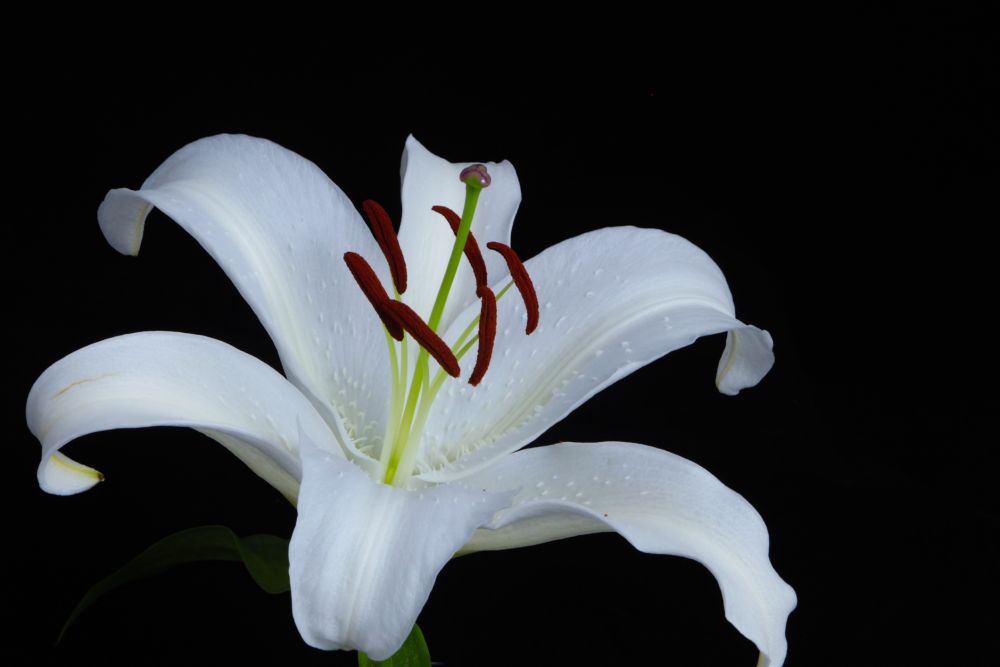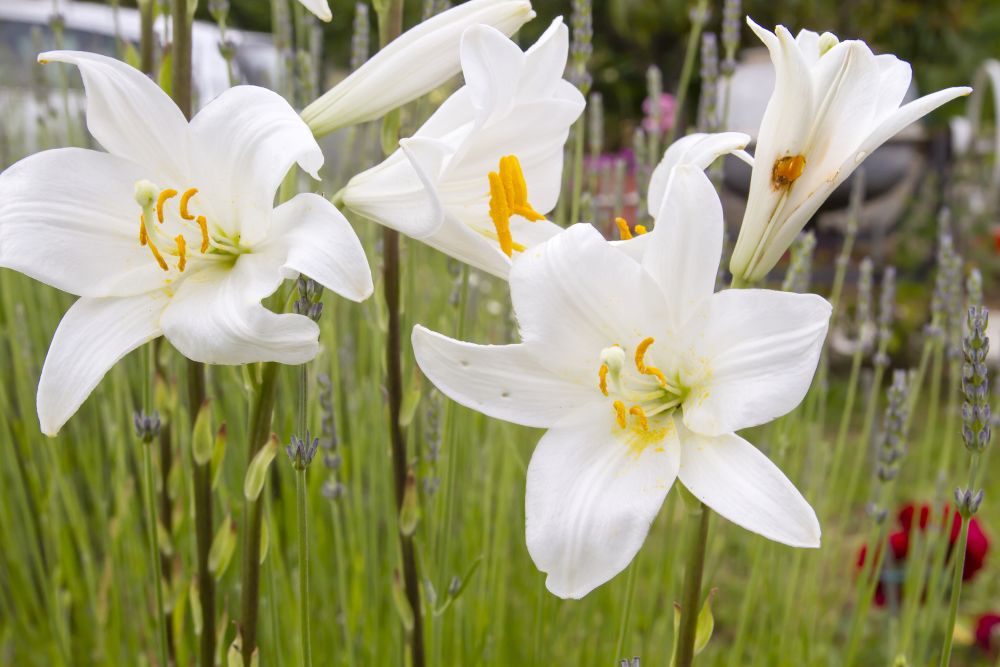Lilium Candidum Care: How to Grow & Care for the Madonna Lily Plant
Perennial plants make flower gardens look superb and well-crafted especially if you know your ways around caring for them. On the face of it, they might look delicate and all, but that’s not true.
One flowering plant that has been unexcelled for many decades is the Madonna Lily. We took time to find all it takes to keep it alive and poised throughout the seasons.
Read on to learn more about caring for the Madonna Lily plant.
Madonna Lily at a Glance
The Madonna Lilly is a bulbous perennial that’s commonly grown for its exquisite blooms. And it’s arguably one of the oldest flowering plants that have been cultivated since many decades ago. To give you an estimate, it has been cultivated for over 3000 years. It’s believed that the perennial houseplant was originally traced in the ruins of Egypt and Crete.
Also scientifically known as Lilium candidum, this epiphyte is genetically a member of the Liliaceae family. Other names synonymous with it are; Frech Lily, Juno’s Rose, St Joseph’s Lily, and White Lily. It’s very much capable of reaching anywhere between 3’ to 4’ inches tall when hitting maturity.
Madonna Lily Caring Tips
Flowering & Fragrance
Most Lilies produce showy blooms that add a touch of elegance to your garden. And it’s no wonder why more gardeners grow them for landscaping or to style up rocky gardens. The Madonna Lily plant blooms flowers with about 6 symmetrical petals that are trumpet-shaped and sit on a narrow stem. They have an intense fragrance and are likely to show up towards the mid-weeks of the spring season. In most instances, the flowers will come in different shades of pink, red, orange, and gold—but mostly white.
Watering & Feeding
During the entire growing season, you’ll need to water your Madonna Lily quite regularly, but you want to avoid leaving the soil too soggy for a long period. Since members of the Liliaceae family are made of perennial herbs, the stems are usually bulbous and are prone to rotting if the soil doesn’t drain any excess water fast enough. Between spring to summer make sure to moisten the soil surface with 1’’ inch deep layer of water at least once per week.
Repeat this exercise for the next two years till your Lily matures. Water this perennial sparingly during winter, but space out the intervals even further if it’s growing outdoors and a solid amount of snow keeps falling. Even though you ought to water this flowering plant with moderation, never leave the soil to dry out entirely. Feeding would work during the growing seasons when the hormones are active.
Growth hormones tend to get out of their dormancy period at a gradual pace during the early weeks of spring. Using a slow-release fertilizer that’s soluble would help boost the growth. It’s best to run a soil test, so you can have insights on the exact nutrients that are lacking before feeding your Madonna lily plant. You can also choose to work with organic options such as compost manure and fish emulsion, but the downside about these is they might not hold the essential nutrients—nitrogen, phosphorus, and potassium—needed for the optimal growth of your perennial plant.
Even so, compost will improve the soil texture and level up the rate of moisture retention quite rapidly. Fertilizer that’s rich in phosphorus would help accelerate the blooming phase, so it’s best to pick one that has a ratio of 5-10-5.
Light & Temperature
While bright light is elementary for chlorophyll production and blooming, your Lilium candidum will quite much appreciate some partial shade. And for gilt-edge results, you want to protect it from the midday sun rays. It’s also worth noting that Madonna lilies are winter hardy perennial plants that optimally thrive in USDA hardiness zones 6-9.
This flowering perennial would at most times tolerate typical temperature fluctuations. But for best results, it needs to grow under temperatures ranging anywhere between 15 to 20 degrees Celsius during spring and summer when the growth hormones are dominantly at their peak. Most flowering plants prefer a constant temperature range during the daytime.
But if the weather is too hot and dry, lower temperatures at night would help your Madonna Lilly recover from the loss of moisture, and prolong the lifespan of the flowers. On the other hand, extremely high or low temperatures can cause this flowering perennial to lose its vigor, experience stunted growth, and look pale.
Soil & Transplanting
What you ought to consider before planting the bulbs is drainage. It’s needless to say that excess moisture causes rotting. To make the bulbs have a firm base, you need to plant them at least one or two inches deep. While the Lily plant can do well in a wide range of soil pH levels, it heavily prefers limestone or alkaline soil. It can thrive in soil with a pH that falls anywhere between 6 to 8.5.
And if possible, try to maintain a neutral soil pH, but if it’s too acidic, then you can amend the soil with lime. Mulch the soil for about 2 weeks before planting the bulbs and add organic compost to improve the nutrients’ composition. The Madonna Lilly is naturally known for absorbing lots of nutrients, so boosting the rate of nutrients in the soil will make it look enchanting throughout the seasons.
Make sure to plant the bulbs in a depth about 3 times their average height and space them out, so they don’t desperately compete for nutrients. The bulbs need to be at least 1.5’ inches apart. Get rid of any rocks or lumps of clay in the soil before planting and be careful not to plant the bulbs while they’re upside down. You can plant them sideways if you’re not sure which side the roots will sprout from.
After planting, don’t squeeze the bulbs too hard since compacted soil doesn’t allow water to pass through with ease. The stems too need to sprout through the soil without any trouble. As a natural remedy for getting rid of pests, you can sprinkle some food-grade diatomaceous earth or cayenne pepper in the planting holes. So long as your Lillies are growing outdoors and spaced out, there won’t be any need for transplanting.
Grooming & Maintenance
The Madonna Lilly plant doesn’t require an intense grooming routine. You just need to mulch the bulbs quite often when the temperatures are hot, to improve the rate of moisture retention. It would also keep your Lilies from freezing during winter. To keep this perennial plant spunky every single day, you want to deadhead the flowers that look pale. Trim the plant when the blooming phase is over and get rid of leaves that start to turn yellow.
You might also need to support lilies that have grown overly tall using stakes to prevent them from plunging. And one way to keep the stems from becoming leggy and weak is giving the entire access to enough light for a couple of hours during the day. Staking your Madonna Lily would also be essential if your area is experiencing heavy winds.
How to Propagate Lilium Candidum (Madonna Lily)
It’s quite natural for most bulbous plants to self-propagate using bulbils, seeds, or offsets that fall off from the mother plant. But using offsets tends to be the most successful option among them all. To get started, you’ll need to:
- Wait till it’s the fall season when the foliage has entirely dried up.
- Uproot the bulbs gently from the soil and detach a few offsets that look healthy from the mother plant.
- Look for smaller offsets and place them in a pot.
- Use potting soil that’s nutrient-rich, well-draining, and has enough compost manure.
- Protect them from extreme cold weather by placing the growing medium somewhere with temperatures that are easy to regulate.
- If the offsets are tiny, it might roughly take between 2-4 years for them to bloom.
- When the offsets take shape, plant them alongside other mature bulbs in the garden to achieve a stunning view of blooms.
- Using seeds is still a viable option when propagating, but can take a little longer. To harvest the seeds, you just need to break the pods open carefully. Sow them during winter inside containers, and wait for radicles to emerge from the coats.
Is Madonna Lily Toxic?
According to a report from the University of Missouri, parts of the Madonna Lily plant hold significant toxic elements that are toxic to cats when ingested. The toxins categorically affect cats but not pets or humans. Even though there’s proof this perennial holds harmful toxicity levels, the compound itself hasn’t been pointed out yet.
Common Pests & Diseases
It’s quite unusual to find the Madonna Lily struggling with any serious pests or diseases. The perennial flowering plant is, however, gravely prone to aphids. To keep the infestation from happening, avoid overwatering and space your lilies out, to give them enough room for air circulation. Also, let the beneficial insects such as ladybugs stick around since they’ll feed on aphids.
Birds too love feeding on bulbous plants growing outdoors, so you’ll want to keep a close eye especially during the blooming phase. Lack of enough light could cause the Lily disease which is a fungus that leaves brown spots on the leaves or flower buds.

